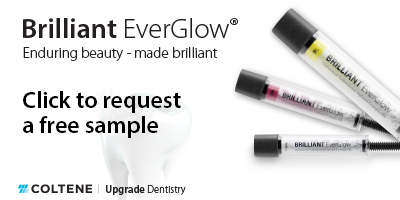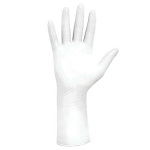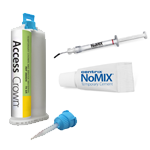
3 Reasons to Use Fully Crystallized Lithium Disilicate Blocks

When you think of milling lithium disilicate blocks, you probably assume that those blocks will need to be fired prior to use – a step that adds time and expense to the process. But what if your lithium disilicate restorations did not need to be fired at all? How might that affect your practice?
This is not a theoretical question, as GC America has introduced a fully crystallized lithium disilicate block, GC Initial® LiSi. According to Dr. Paresh Shah, an instructor at the University of Manitoba Dental School who maintains a private practice in Winnipeg, Canada, these blocks offer three significant advantages that have made a big difference in his own practice. Here’s why he uses and recommends them…
#1: Save significant time
Because the block is fully crystallized, Dr. Shah explains, “It allows us the ability to not have to crystallize it in a furnace. And that saves time versus some of the other lithium disilicate CAD/CAM blocks out there. Depending on the furnace, block and workflow, that can run anywhere from 10 minutes to over 30 minutes. If you can save that amount of time, certainly that time is worth money.”
How long does it take Dr. Shah to complete a restoration using GC Initial® LiSi? “When I’m doing, say, a bicuspid,” he shares, “and you know it’s a smaller restoration, I can mill it in my mill in about maybe 12 minutes or so. Overall, I could do the whole procedure with a fully crystallized block, prep it, scan it, design it in some open software which I have and then mill it, in a little over an hour. That’s with delivery. If it’s a molar it’ll be a little longer so it’ll take maybe about an hour and a half.”
#2: Get strong restorations
“If you can save time, that certainly goes to the bottom line,” Dr. Shah affirms. “At the same time, you don’t want to compromise quality and longevity of a restoration. When you look at strengths of a lot of the lithium disilicate materials that are out there right now, the range in terms of megapascals is a bit of a range in the high 300s up to 500. [GC Initial® LiSi] can approach strengths of 400 megapascals from some of the studies, and when it’s bonded to healthy tooth structure, it’s pretty darn good.”
The key to success, Dr. Shah says, is just like the key to success with any lithium disilicate restoration: You need to do things right. This includes proper prep design, material thickness, bonding protocols, etc.
[blogad]
#3: Achieve highly-esthetic results
In Dr. Shah’s opinion, the fact that this fully crystallized material does not require firing does not impact the esthetics of the finished restoration. Instead, he relates, esthetics is based on what you do in terms of “polishing it, finishing it, just making it worthy of being bonded in to the patient’s mouth.” As he points out, whether the restoration is fired in an oven or not, if you don’t do these things – or don’t do them well – you will not get the esthetic results you desire.
What if you want to characterize the restoration? In this case you use GC Initial® IQ Lustre Pastes ONE. It's the most versatile paintable ceramic with improved fluorescence for external staining as well as internal characterization of substructures. Once you finish characterizing it, you fire it up to get a beautifully esthetic result.
Conclusion
For many practices, this fully crystallized lithium disilicate material is a real game changer. This material provides high strength and excellent esthetics without the need to fire. It’s a simplified workflow that saves time and money – without sacrificing strength or beauty.
























